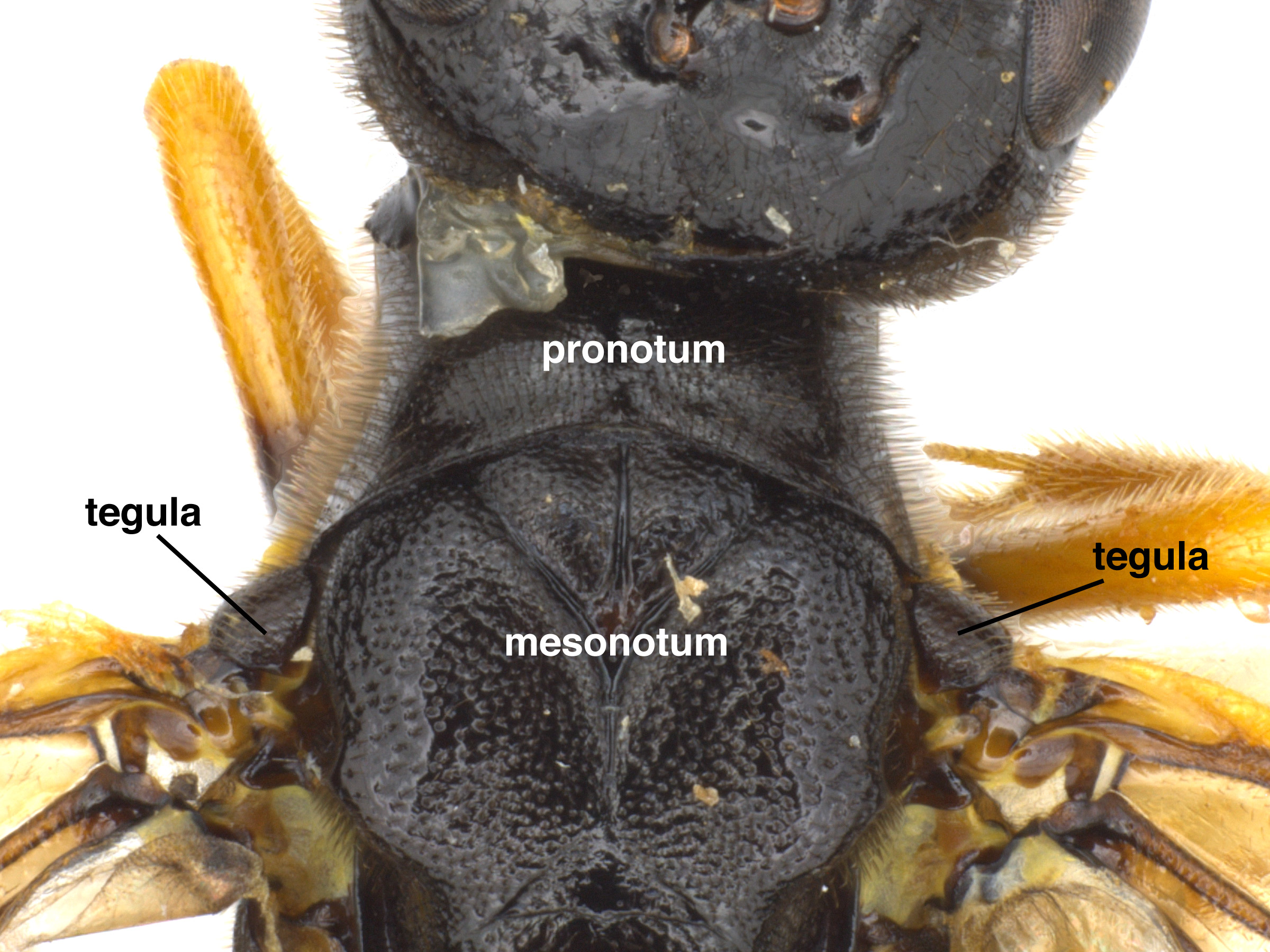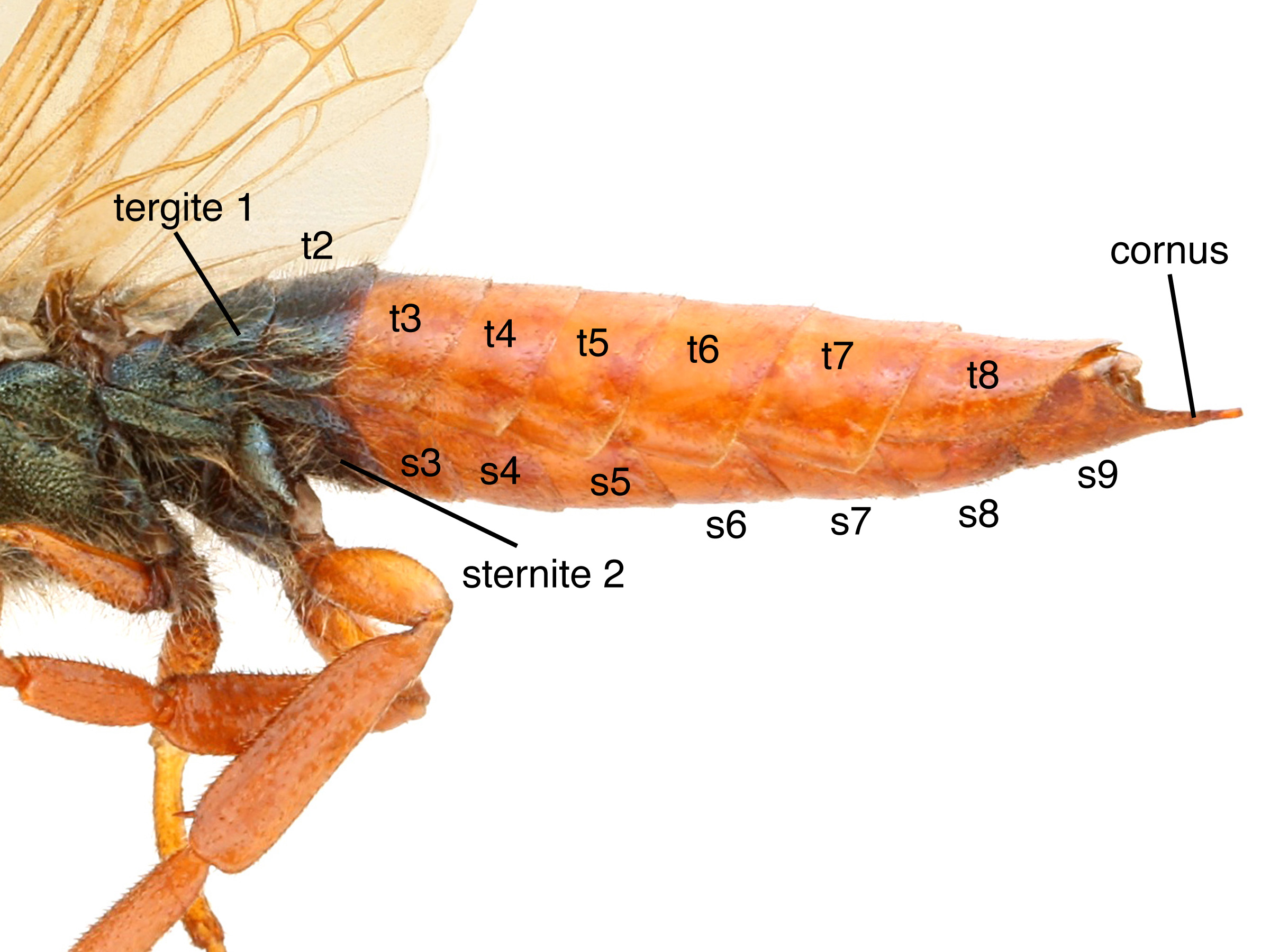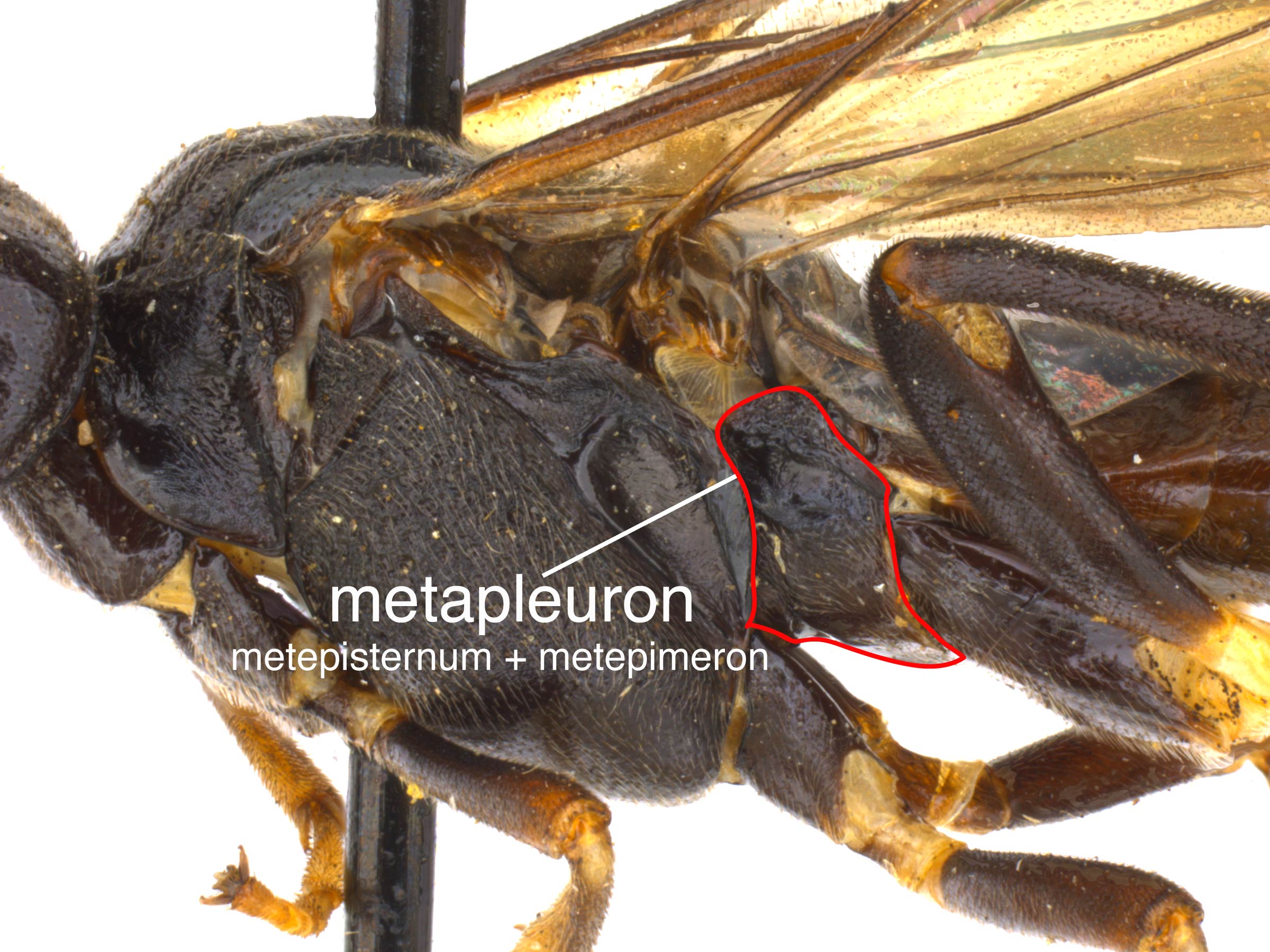Superfamily: Tenthrediniodea
Family: Argidae
Family common name: argid sawflies
Subfamilies: Zenarginae, Arginae, Atomacerinae, Erigleninae, Dielocerinae, Sterictiphora
The family Argidae is the second most species-rich family of sawflies worldwide and has a widespread distribution (Taeger et al. 2018Taeger et al. 2018:
Taeger A, Liston AD, Prous M, Groll EK, Gehroldt T, and Blank SM. 2018. ECatSymmdash;Electronic World Catalog of Symphyta (Insecta, Hymenoptera). Program version 5.0 (19 Dec 2018), data version 40 (23 Sep 2018). Senckenberg Deutsches Entomologisches Institut (SDEI), Muuml;ncheberg. https://sdei.de/ecatsym/ Accessed: 28 Jan 2020.). The family is divided into six subfamilies, each of which has their own diagnostic characteristics. Argidae sawflies are found throughout the world and have a diverse suite of host plants (Smith 1992Smith 1992:
Smith DR. 1992. A synopsis of the sawflies (Hymenoptera: Symphyta) of America south of the United States: Argidae. Memoirs of the American Entomological Society 39: 1-201.). Several species are economic pests, and at least two species have been utilized as biocontrol agents (Smith and Middlekauff 1987Smith and Middlekauff 1987:
Smith DR and Middlekauff WW. 1987. Suborder Symphyta. In: Stehr FW ed. Immature Insects. Kendall/Hunt Publishing Company. Vol. 1: 754 pp.). Adults are easily recognized by a small-medium body size, about 3–10 mm, and the unsegmented flagellumflagellum:
the third section of the antennae that includes all the segments beyond the pedicel; segments of the flagellum are known as flagellomeres
 (Goulet 1992Goulet 1992:
(Goulet 1992Goulet 1992:
Goulet H. 1992. The genera and subgenera of the sawflies of Canada and Alaska: Hymenoptera. Symphyta. The insects and arachnids of Canada. Part 20. Agriculture Canada Publication.).
Argidae includes 60 genera and 913 species worldwide. About 9 genera and 90 species are NearcticNearctic:
describing the region of the Northern Hemisphere that includes North America south through northern Mexico
 in distribution (Taeger et al. 2018Taeger et al. 2018:
in distribution (Taeger et al. 2018Taeger et al. 2018:
Taeger A, Liston AD, Prous M, Groll EK, Gehroldt T, and Blank SM. 2018. ECatSymmdash;Electronic World Catalog of Symphyta (Insecta, Hymenoptera). Program version 5.0 (19 Dec 2018), data version 40 (23 Sep 2018). Senckenberg Deutsches Entomologisches Institut (SDEI), Muuml;ncheberg. https://sdei.de/ecatsym/ Accessed: 28 Jan 2020.).
Aprosthema
Arge
Atomacera
Neoptilia
Ptenos
Schizocerella
Sphacophilus
Sterictiphora
Zynzus
 medially constricted as seen from above (Goulet 1992Goulet 1992:
medially constricted as seen from above (Goulet 1992Goulet 1992: short ventrally (Goulet 1992Goulet 1992:
short ventrally (Goulet 1992Goulet 1992: spurs present (Goulet 1992Goulet 1992:
spurs present (Goulet 1992Goulet 1992: extended (Goulet 1992Goulet 1992:
extended (Goulet 1992Goulet 1992: sometimes forked (Goulet 1992Goulet 1992:
sometimes forked (Goulet 1992Goulet 1992: 1 laterally fused to metapleuronmetapleuron:
1 laterally fused to metapleuronmetapleuron: (Goulet 1992Goulet 1992:
(Goulet 1992Goulet 1992:In North America, Argidae feed on a broad range of hosts in the plant families Anacardiaceae, Convolvulaceae, Fabaceae, Malvaceae, Portulacaceae, Rosaceae, and Tiliaceae (Smith 1992Smith 1992:
Smith DR. 1992. A synopsis of the sawflies (Hymenoptera: Symphyta) of America south of the United States: Argidae. Memoirs of the American Entomological Society 39: 1-201.).
Sawflies in this family are similar in form to families in the superfamily Tenthredinoidea: Diprionidae, Pergidae, and Tenthredinidae. Argidae can be distinguished by the number of antennal segments (Goulet 1992Goulet 1992:
Goulet H. 1992. The genera and subgenera of the sawflies of Canada and Alaska: Hymenoptera. Symphyta. The insects and arachnids of Canada. Part 20. Agriculture Canada Publication.).
The majority of Argidae are external leaf feeders, excepting Schizocerella pilicornis, a leaf-miner (Smith and Middlekauff 1987Smith and Middlekauff 1987:
Smith DR and Middlekauff WW. 1987. Suborder Symphyta. In: Stehr FW ed. Immature Insects. Kendall/Hunt Publishing Company. Vol. 1: 754 pp.). Several argid species have subsocialsubsocial:
Living in aggregations but lacking organizational structure as in true social insects; can describes insects with tendencies to protect or care for thier young, feed gregariously, and build cocoon masses.
habits including gregariousgregarious:
describing insects in large groups or aggregations
feeding, group cocoon formation, and protection of developing eggs and larvaelarva:
the immature stage of holometabolous insects
 by the mother (Smith 1992Smith 1992:
by the mother (Smith 1992Smith 1992:
Smith DR. 1992. A synopsis of the sawflies (Hymenoptera: Symphyta) of America south of the United States: Argidae. Memoirs of the American Entomological Society 39: 1-201.). LarvaeLarva:
the immature stage of holometabolous insects
 generally have noticeable colors, tubercles, or setaeseta:
generally have noticeable colors, tubercles, or setaeseta:
hair-like structure
(Smith and Middlekauff 1987Smith and Middlekauff 1987:
Smith DR and Middlekauff WW. 1987. Suborder Symphyta. In: Stehr FW ed. Immature Insects. Kendall/Hunt Publishing Company. Vol. 1: 754 pp.).
World: Argidae is present on all continents except Antarctica (Goulet 1992Goulet 1992:
Goulet H. 1992. The genera and subgenera of the sawflies of Canada and Alaska: Hymenoptera. Symphyta. The insects and arachnids of Canada. Part 20. Agriculture Canada Publication.).
North America: Representatives of the family occur throughout the United States and Canada and into Mexico, the Caribbean Islands, and Central America (Smith and Middlekauff 1987Smith and Middlekauff 1987:
Smith DR and Middlekauff WW. 1987. Suborder Symphyta. In: Stehr FW ed. Immature Insects. Kendall/Hunt Publishing Company. Vol. 1: 754 pp., Smith 1992Smith 1992:
Smith DR. 1992. A synopsis of the sawflies (Hymenoptera: Symphyta) of America south of the United States: Argidae. Memoirs of the American Entomological Society 39: 1-201.).